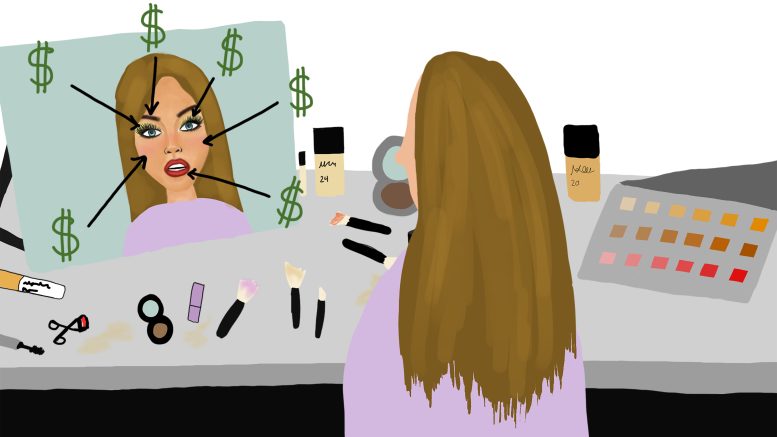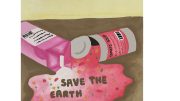The beauty industry profits from creating a culture of insecurity and dissatisfaction with our appearance, so that it can continue to exploit people’s insecurities by creating a demand for beauty products and services that promise to “fix” flaws or imperfections.
The global beauty industry generates $722.6 billion in revenue as it attempts to bring its consumers one step closer to the idealistic beauty standard. The industry uses ads, social media and magazines to portray and uphold an elusive ideal of beauty that is unattainable for most people.
Studies cited by Bradley University have found that increased media exposure to images of the ideal thin person leads to an increase in body dissatisfaction and lower self-esteem in women. Further research into the effects of mass media on body image found that 69 per cent of elementary school girls who read magazines are influenced by the body ideal, so much so that 47 per cent of those were convinced to lose weight.
Although there isn’t as much research on male body image, reports still show that media exposure increases body dissatisfaction in males and is linked to a desire to be muscular. I would think that media exposure would also be a factor in why more than 90 per cent of men experience body dissatisfaction and hold negative feelings and thoughts about themselves or their bodies.
This all goes to show that the media is a driving force in the maintenance and upkeep of beauty standards. When we continue to consume media, whether it be watching Netflix, shuffling through magazines, going to the movies or simply scrolling through social media, we are met with people who resemble these ideals.
Due to our constant consumption of idealized beauty and how easy it is to compare ourselves to others, media serves as a daily reminder of our shortcomings when it comes to meeting beauty standards. This can then breed further a sense of inadequacy and insecurity in people.
Yet, beauty ideals are so unobtainable that even the people whose physical traits serve as the blueprint for these standards don’t feel like they are enough.
A golden ratio-based measure of beauty done by a cosmetic surgeon referred to supermodel Bella Hadid as the most beautiful woman in the world. Despite this, Hadid has been very candid about her body image issues, insecurities and struggles with eating disorders. She even admitted to getting a nose job at 14.
All of this indicates that beauty standards may not be created to be attained, but rather to be chased after. In a capitalist society, to be insecure is to be in a constant state of being that is receptive to making a purchase. Insecurities serve as a currency in a universal market that is equipped with endless products and regimens promising to be the answer.
The industry supplies insecurities and then builds demand for products that will improve or enhance one’s appearance. Meaning, if you have wrinkles and look your age, you are targeted to buy anti-aging creams and serums. If you are not skinny, then you are encouraged by celebrities and influencers to buy weight loss supplements, weight loss tea and other creations for supposed rapid weight loss.
However, what isn’t disclosed is that these industries do not care about helping you rid yourself of your insecurities. In fact, it’s quite the opposite. As long as people stay insecure, there is money to be made.
The demand for products and solutions is so lucrative that the global beauty and personal care market is predicted to expand by just over three per cent annually until 2027.
Nevertheless, our fixation on beauty can have a lot of negative effects, including anxiety, depression, eating disorders and body dysmorphic disorder.
According to a survey conducted by the Dove Self-Esteem Project, 72 per cent of girls feel pressured to be beautiful while only four per cent of women globally think they are beautiful.
This finding further demonstrates the negative effects that unrealistic standards have on girls and women’s self-esteem and mental health.
Despite the negative consequences that beauty standards have, it is in the beauty industry’s best interest to uphold and constantly change beauty standards to keep all of us in an endless cycle of insecurities, ensuring maximum profits are made from our desire to be attractive.
Our best method of protection is to push back against beauty standards and realize we are simply being sold products, not worth or beauty.




